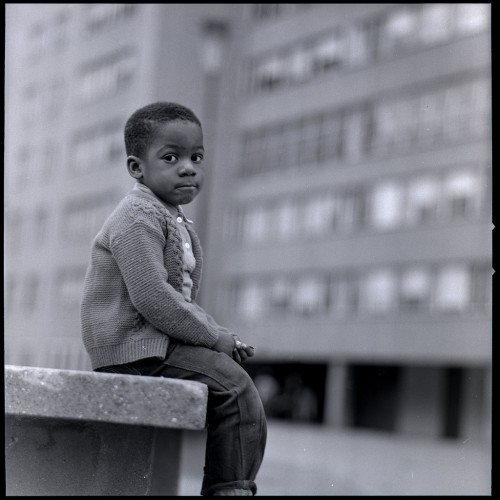"A pioneering mix of race & class. The changing face of American Cities."
Pruitt Igoe was seen as one of the modern movements first realisations. They were designed by the architect Yamasaki, the same architect who designed the World Trade Centre in New York and the 33 11 story buildings were completed in September 1955. Altogether it had 2,868 apartments split into two complexes, the Pruitt complex and the Igoe complex on 55 acres in central St. Louis. Pruitt was originally meant to be for African-American residents and Igoe was for the whites, but not long after moving in the white residents no longer wanted to live in such close proximity to their black counterparts and moved out making the scheme entirely negro.
The design incorporated large communal hallways meant to reflect the American idea of the porch. The one, two and three bedroom apartments were clean, new and had all of the modern appliances, furniture and amenities. It really was the Le Corbusier idea of the modern living machine, how could it go wrong...
From the very start of residency, the whole scheme only reached a height of 91% and was a breeding ground for crime. The large hallways as well as other features such as skipstop elevators (elevators which only stopped on every third floor) and stairways were all the site of vandalism, crime and general 'antisocial' behaviour... Police were reluctant to answer calls in the complex (approx 2/3rds of all 911 calls wen't unanswered), after committing a crime the person would run into the complex and know he/she could find a safe haven and elude the authorities.
Broken windows, single parent families, low incomes and unemployment were abundant in the site. The community rooms, the large communal hallways, the stairways and the outside spaces were sources of fear and violence. The Pruitt Igoe scheme had failed badly.
On March 16th 1972 the gradual demolishment of the scheme began with the rigged explosion of one of the buildings. Many, including Charles Jenks mark that moment as the death of modernism. The architect Yamasaki never mentioned the scheme in his autobiography and has been known to say it was a project he wishes he never did.
“Modern Architecture died in St. Louis, Missouri on July 15, 1972 at 3.32 pm (or thereabouts) when the infamous Pruitt Igoe scheme, or rather several of its slab blocks, were given the final coup de grâce by dynamite.”
Many of the factors for which the project failed are believed to be of social, political, economical and cultural origins, and not design related (I disagree, any good design should not only include all of those factors, but should be based on them). As stated above, the apartments were clean and modern...and autonomous. When I see the vast amount of complaints and inclusion of graffiti in the vandalism and crime aspects which led to its eventual death, I can't help but draw the conclusion that the presence of graffiti as the illustration that within this sterile jungle man need to identify and re-appropriate his surroundings. Modernism was, in my opinion a flawed ideal from the beginning. The idea that a high-rise machine for living with repeated modulars and blank white walls is not a place where a person can draw comfort from...it is not a home. When a community moves into a place such as Pruitt Igoe, the sense of community is extremely low, nobody takes ownership of the space and therefore cares for the space. If a space does not nurture a sense of identity, then vandalism, crime and antisocial behaviour will soon take hold.
Broken windows, single parent families, low incomes and unemployment were abundant in the site. The community rooms, the large communal hallways, the stairways and the outside spaces were sources of fear and violence. The Pruitt Igoe scheme had failed badly.
“Modern Architecture died in St. Louis, Missouri on July 15, 1972 at 3.32 pm (or thereabouts) when the infamous Pruitt Igoe scheme, or rather several of its slab blocks, were given the final coup de grâce by dynamite.”
Charles Jencks
The New Paradigm in Architecture: The Language of Post-Modernism
The New Paradigm in Architecture: The Language of Post-Modernism
The final structure was demolished in 1975 and ever since, 33 acres and the power station were abandoned, haunted by their past. Today nature has reclaimed the site, a natural urban forest dissected by unused paths now occupy the land and it is on this plot that the design competition is looking for ideas.
The competition is not a typical physical design competition...but more a calling for ideas, 'to start a conversation' as the organisers have said. They've called for entries from architects, designers, musicians, artists, poets...anyone really! It can consist of one a1 sheet or a 120 second long video...
Exciting.












No comments:
Post a Comment